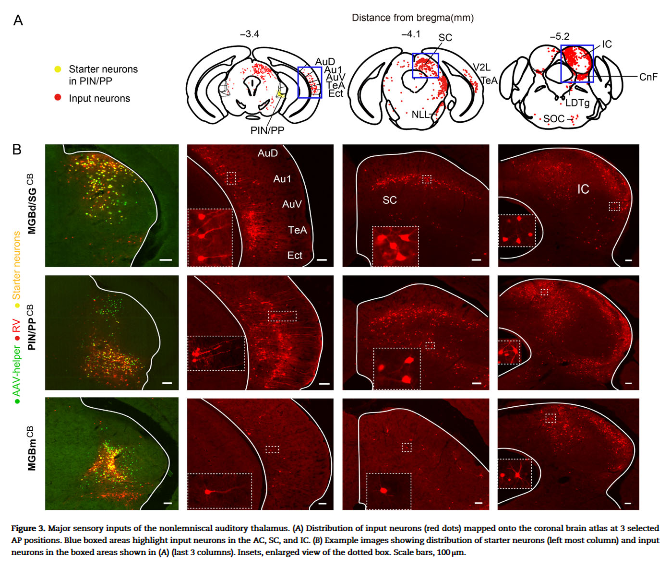On May 24, 2018, a research team led by Professor Kexin Yuan from the School of Medicine at Tsinghua University published a research article entitledA Distinct Anatomical Connectivity Patterns Differentiate Subdivisions of the Nonlemniscal Auditory Thalamus in Mice in Cerebal Cortext.
In this paper, the authors found that 1) the dorsal and medial parts of the auditory thalamus were predominantly connected to sensory processing centers, whereas the posterior intralaminar (PIN) and peripeduncular nucleus (PP) were additionally connected to emotion and motivation modulation centers; 2) ventral auditory cortical areas were the major source of cortical inputs for all subdivisions, and the PIN/PP received more inputs from cortical layer 5 than other subdivisions did; 3) deep layers of the superior colliculus and rostral part of the nonlemniscal inferior colliculus preferentially projected to the PIN/PP; and 4) compared with the dorsal auditory thalamus, the PIN/PP mainly innervated association cortices. In addition, new brain areas connected to the nonlemniscal auditory thalamus, mostly the PIN/PP, were identified. There results suggested subdivision-specific function of the nonlemniscal auditory thalamus in sound processing.
https://academic.oup.com/cercor/advance-article/doi/10.1093/cercor/bhy115/5002126?guestAccessKey=7f1afe3f-8898-4644-ac8f-b8c0f9f84700

Dongqin Cai and YinYue,Ph.D students, at the School of Medicine at Tsinghua University, are the co-first authors of this article. Dr. Kexin Yuan are correspondence authors of this article. This study thanked C.E. Schreiner and D.T. Larue for critical comments and suggestions, and P. Cao, C. Chen, M. Cheng, Y. Li, Q. Feng, C. Zhan, J. Zhang, X. Zhang, and C. Zhu for technical assistance. Funding: National Natural Science Foundation of China (31371115 and 81527901), Center for Brain-Inspired Computing Research, and Tsinghua IDG/McGovern Institute for Brain Research.
